site search
online catalog
RARE STYLE JACKET WORN BY GENERAL THOMAS G. STEVENSON, KILLED IN ACTION MAY 1864 NEAR SPOTSYLVANIA COURT HOUSE
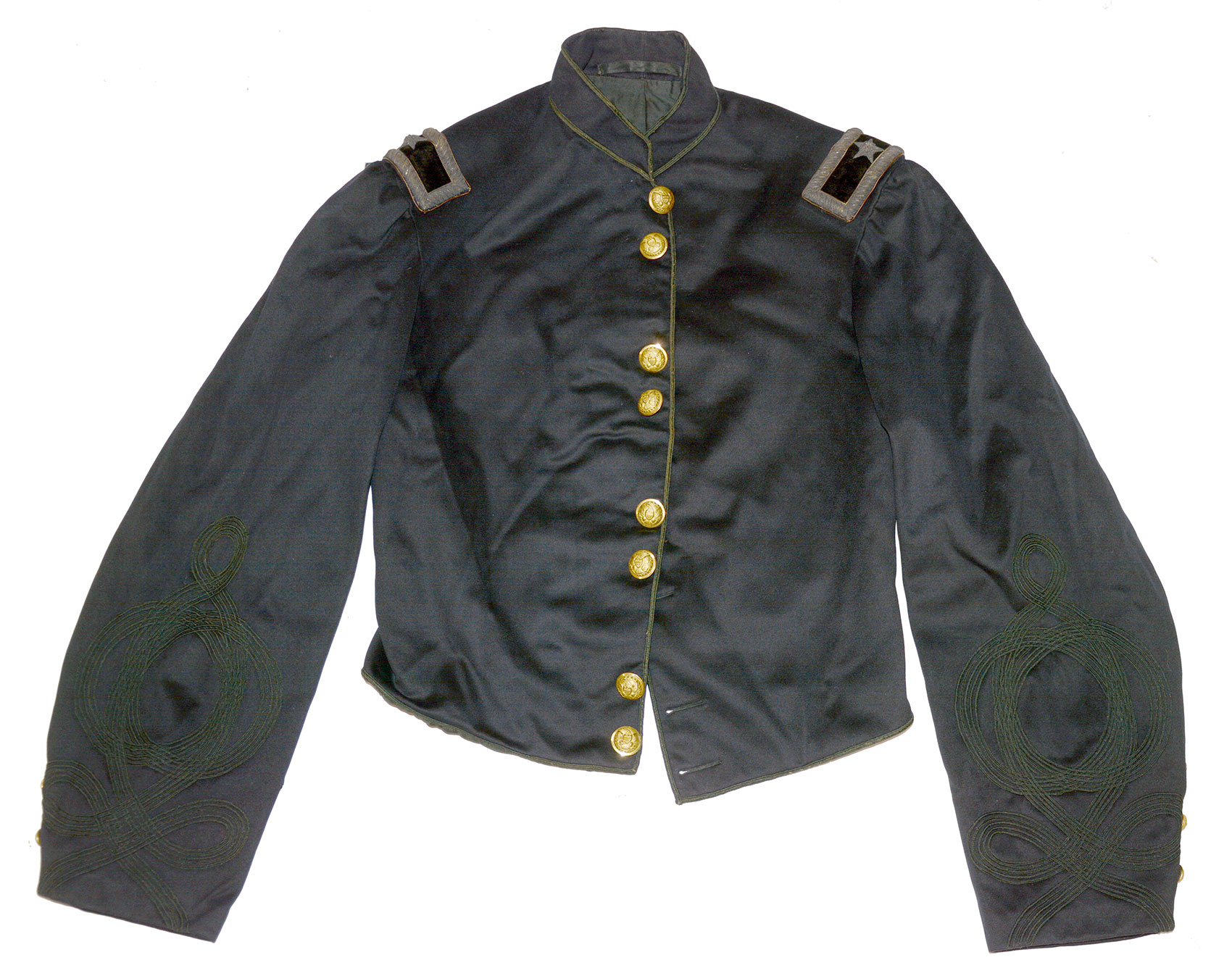
Hover to zoom

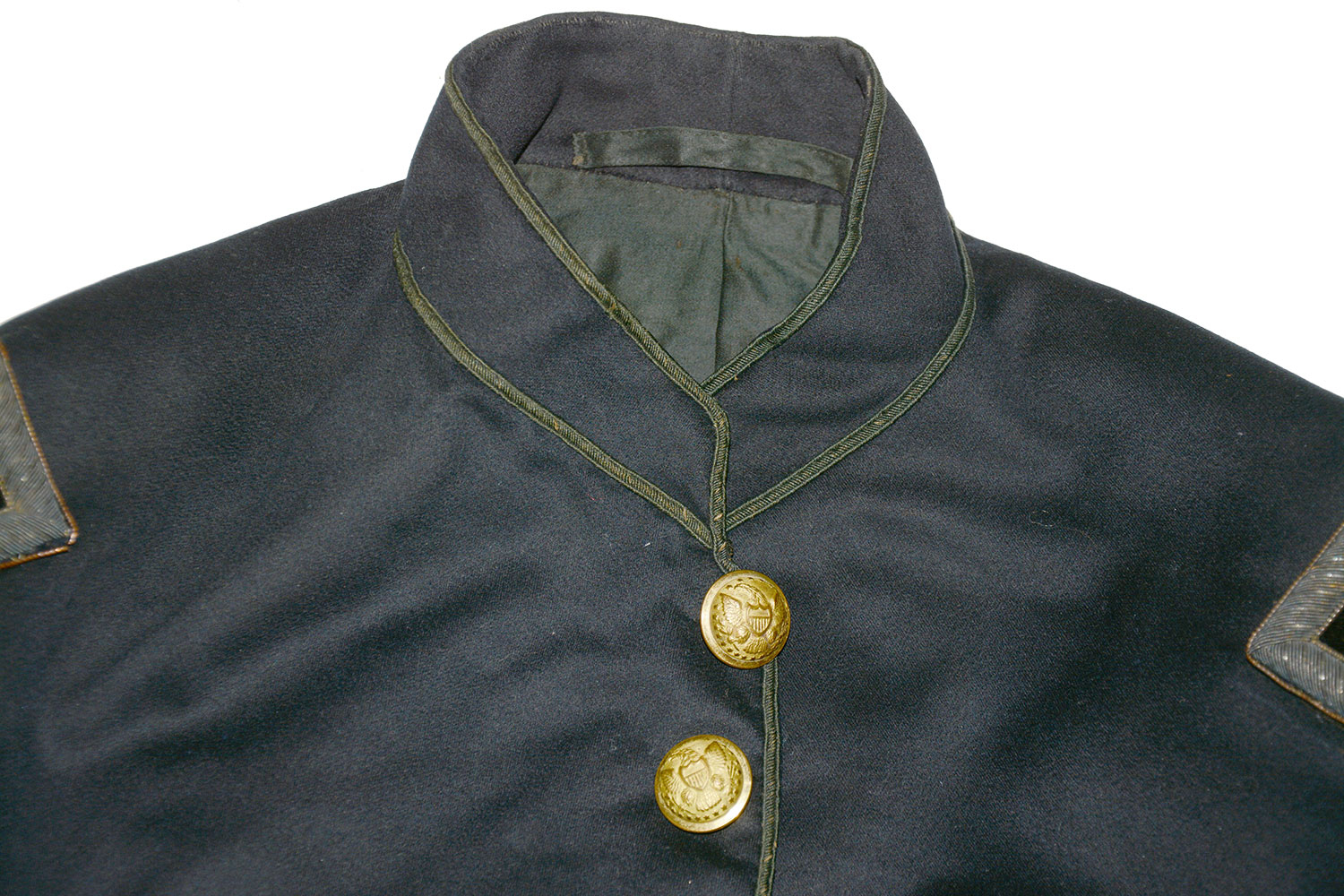
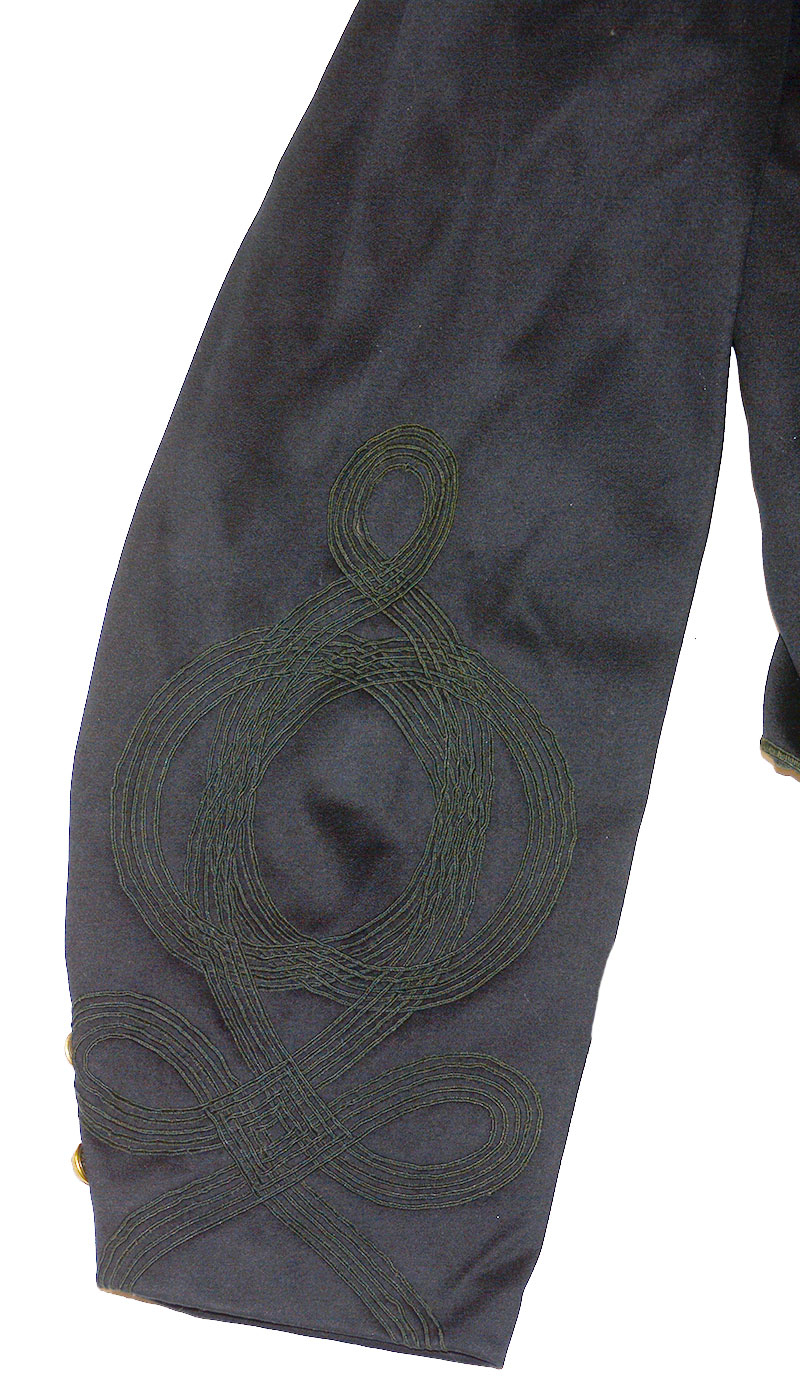
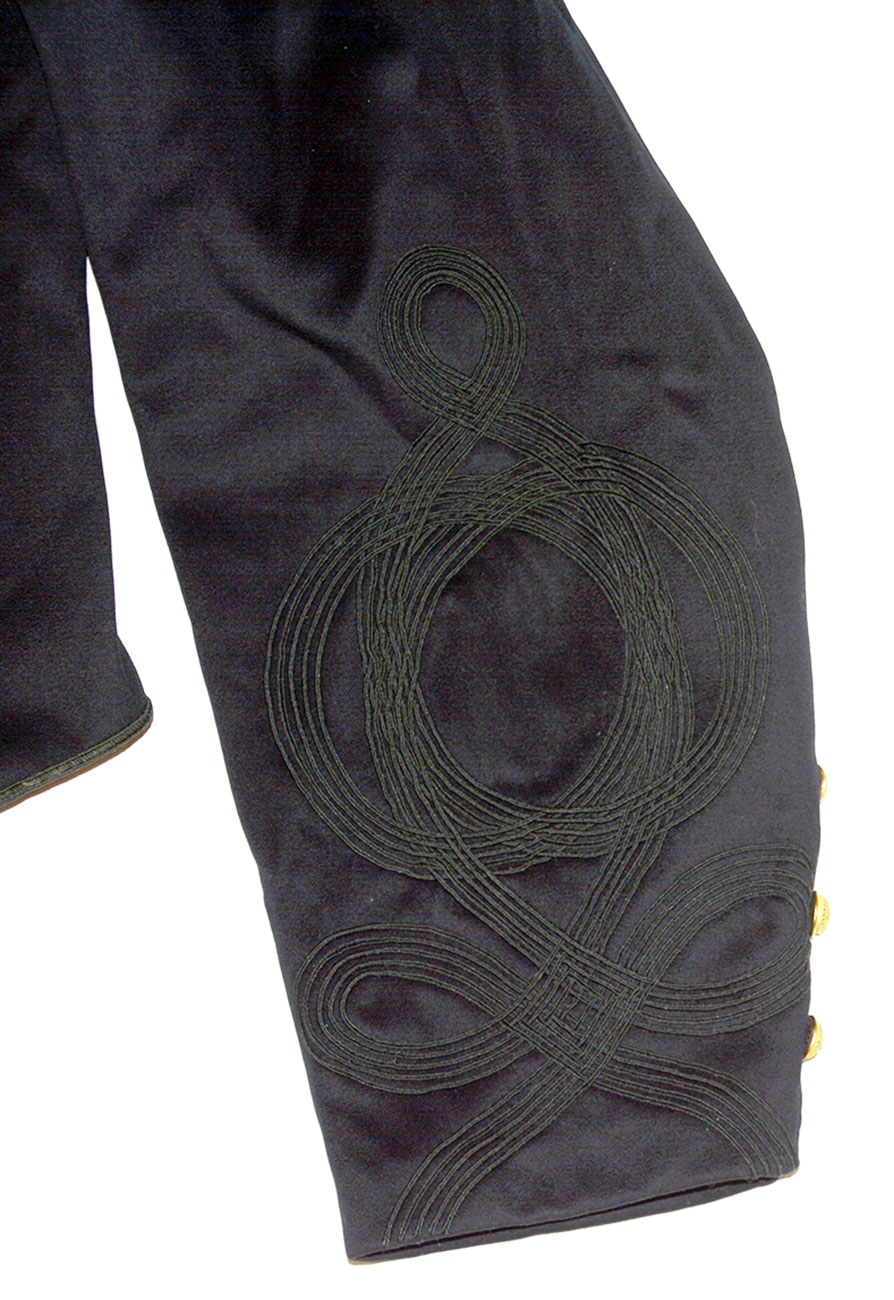
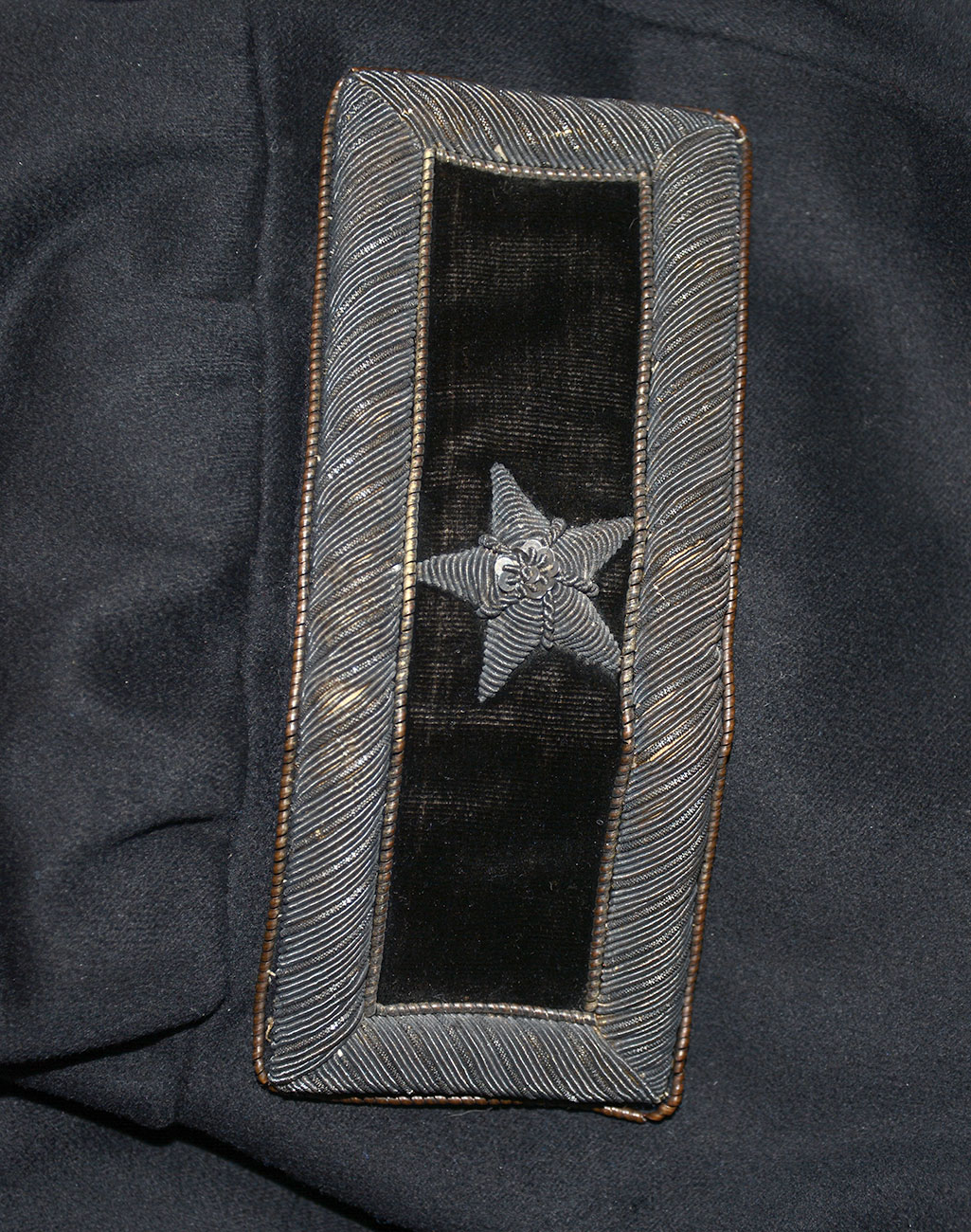
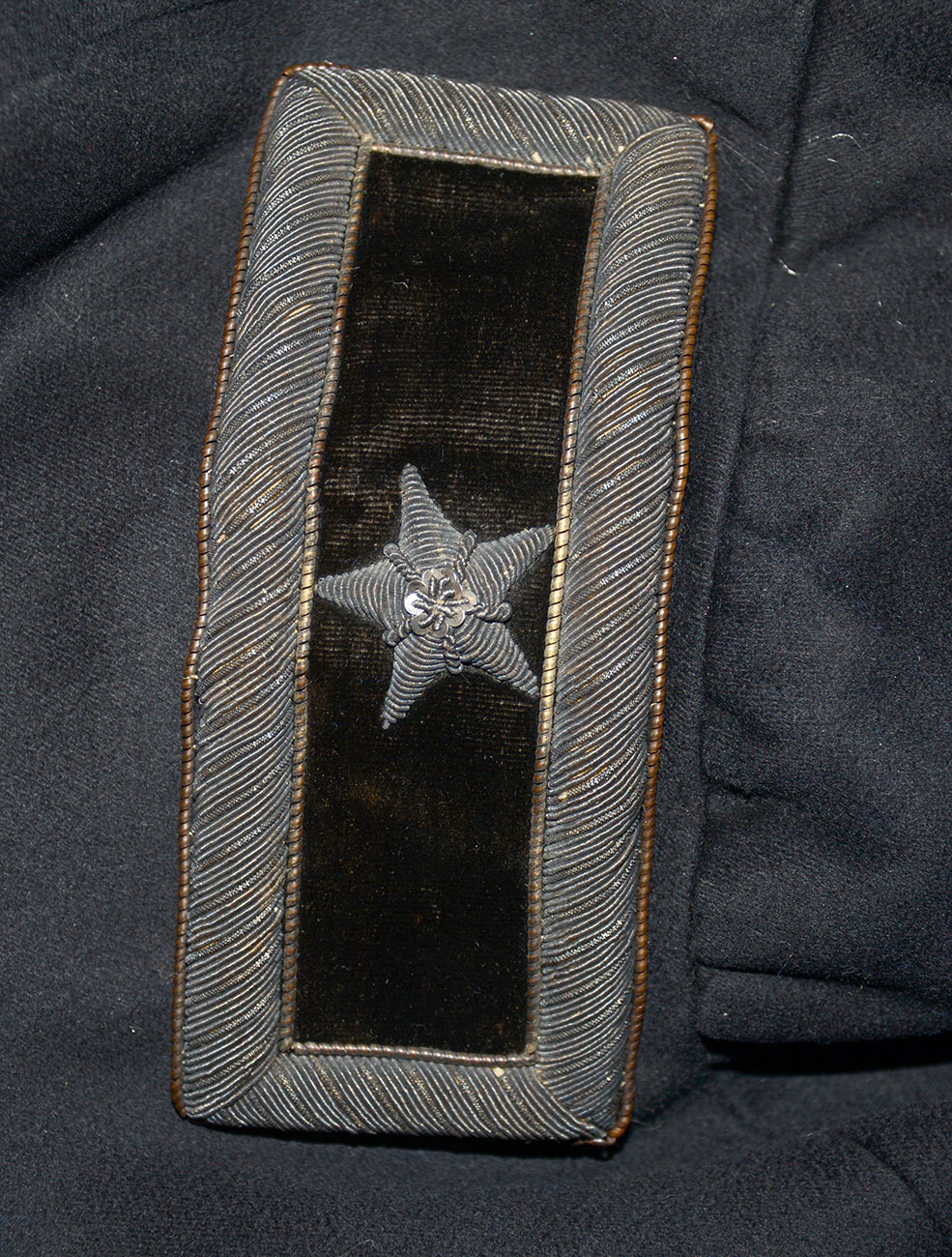
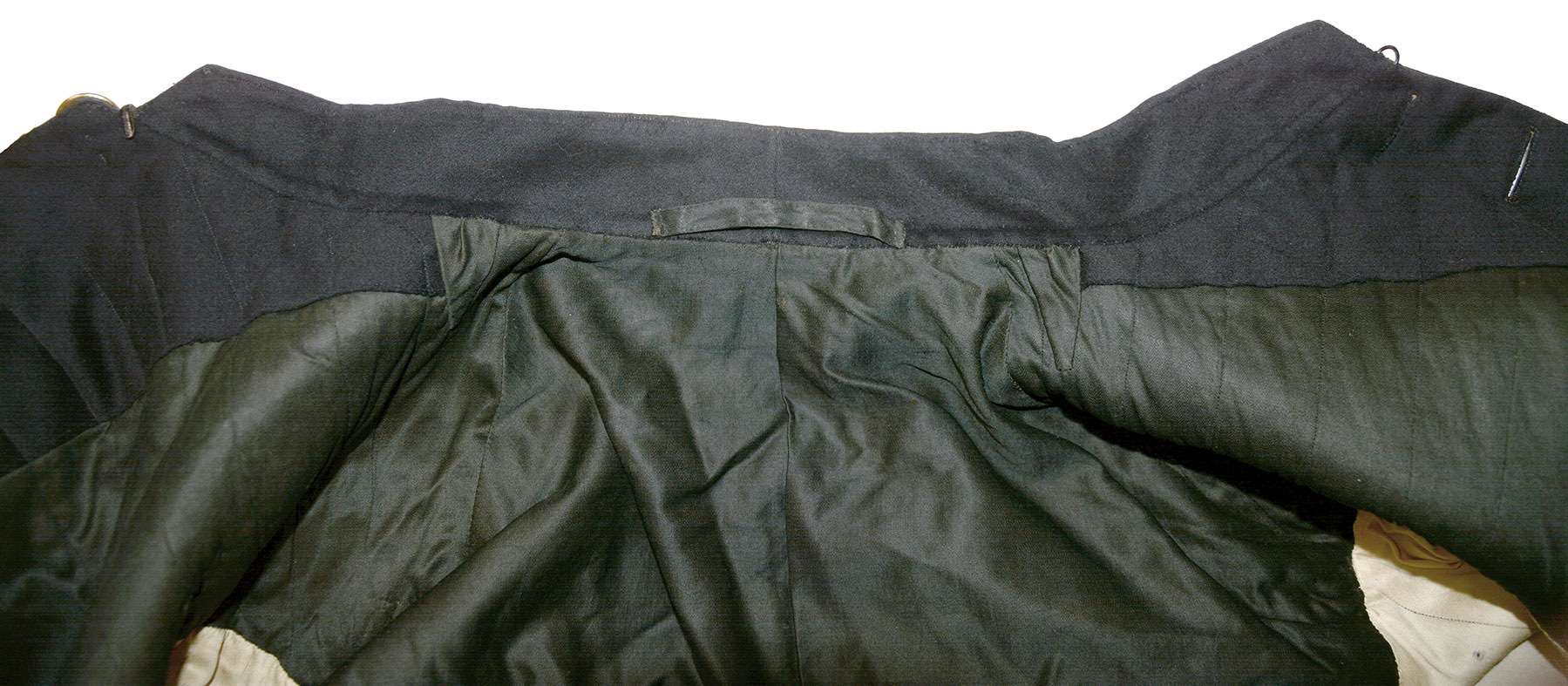

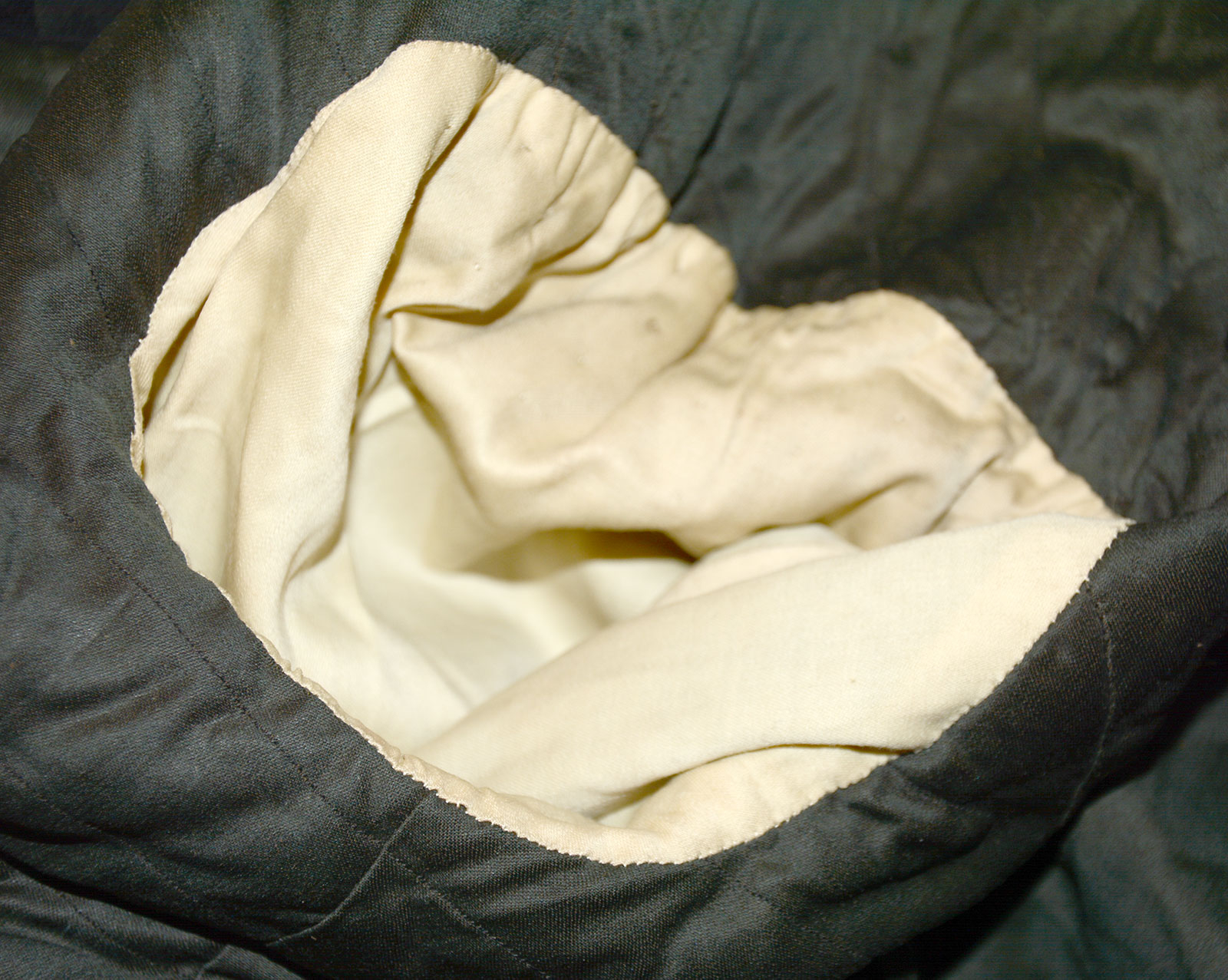


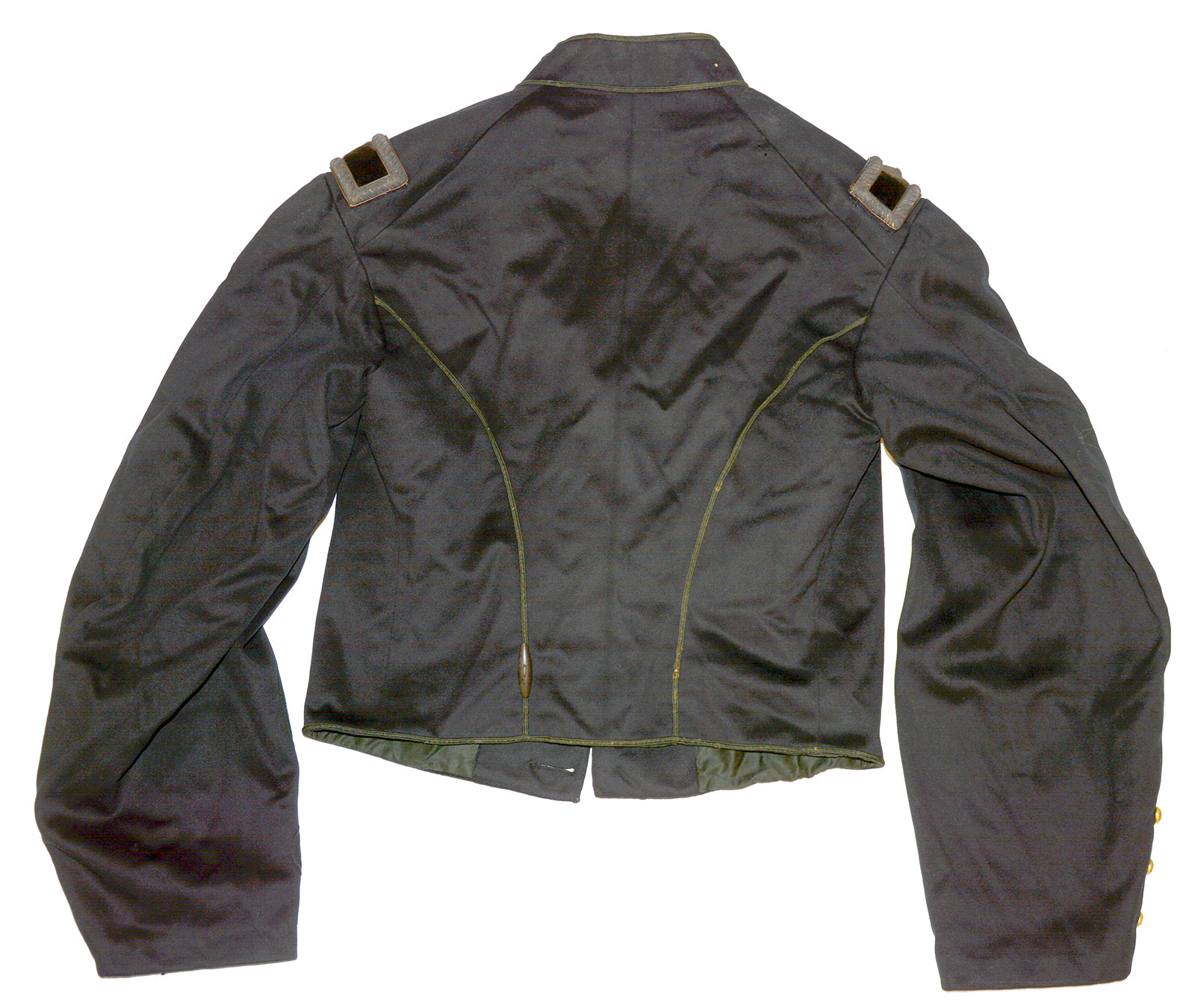
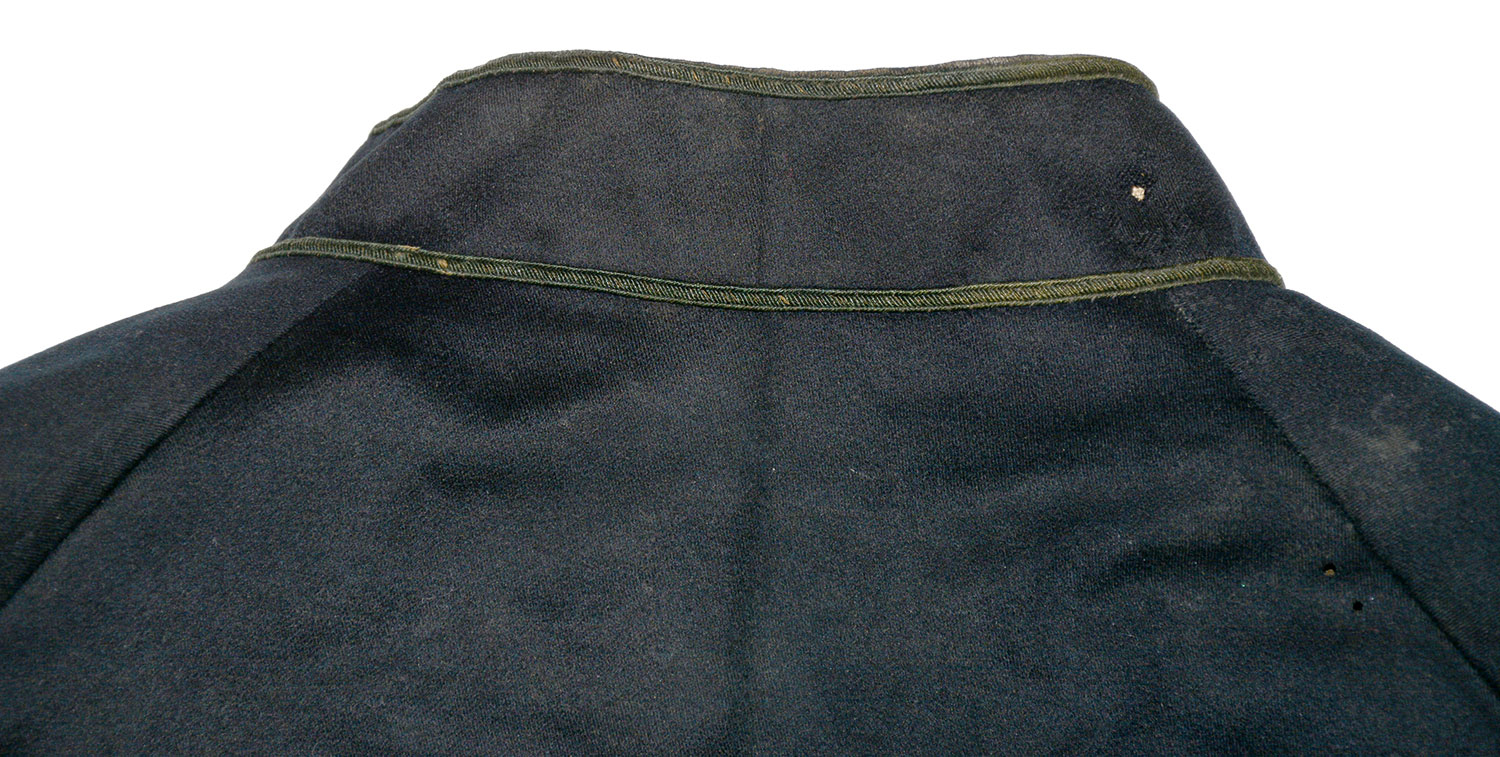

$39,500.00 SOLD
Quantity Available: None
Item Code: 1268-310
Thomas Greely Stevenson was born in Boston Massachusetts. He was 25 years old when the Civil War began. He had risen from private to major in the Massachusetts Militia very quickly. On December 3, 1861, Stevenson was appointed colonel of the 24th Massachusetts Volunteer Infantry. He led his regiment in the battles of Roanoke Island and New Bern. Stevenson soon assumed command of a brigade. He was promoted to brigadier general on December 24, 1862. He then held a series of commands along the Atlantic coast in North and South Carolina. During the siege of Charleston Stevenson commanded the 3rd Brigade in Terry's division. He remained in brigade command around Charleston until January 1864. On April 19, 1864, he was placed in command of the 1st Division, IX Corps. He led his new division into action at the battles of the Wilderness and Spotsylvania. On May 10, 1864, while resting beneath a tree, Stevenson was shot and killed. The circumstances of his death are worth relating:
"Brig. Gen. Thomas Greely Stevenson was “laying under a tree in the shade” — or “reclining on the grass,” depending on the account—chatting with his staff following a late breakfast. Others said it was an early lunch. In either case, all agreed there had been food involved and that Stevenson was out of harm’s way. They felt safe except for the occasional stray bullet kicking up dirt around them. “It was a part of our routine experience,” said one of Stevenson’s staffers, Edwin Rufus Lewis of the 21st Massachusetts.
It was morning, May 10, 1864, just outside Spotsylvania Court House. The IX Corps division commander had just finished an inspection of his lines and retired with his staff to finally have a meal.
Stevenson, chatting with his staff, was in the middle of issuing an order “for having proper care taken of the bodies” of dead Federal soldiers. Or, said another member of the conversation, Stevenson had “just spoken of getting some place for Headquarters which should be shady and also safe.” Whatever he was saying, he stopped dead in the middle of a sentence. Or not quite dead, not dead yet, according to other accounts. Some said “instantly,” while Lewis said, “in an hour or so.” Stevenson’s adjutant, Charles Mills, said “two or three hours.”
What everyone does agree on, it seems, is that Stevenson was smoking his pipe and speaking and was in the middle of saying something when a bullet hit him in the head and cut off his speech. Then he slowly crumbled to the ground. And sometime within the span of “instantly” and “three hours,” he died.
Word quickly spread that a sharpshooter had killed him. Other rumors said it was a stray shot—a terribly unlucky, random accident.
Mills, present but not looking at the general, wrote a letter home within the hour in which he said, “Gen. Stevenson was killed this AM by a rebel sharpshooter...” But Mills soon changed his assessment: “I don’t think that it was a sharpshooter, as I wrote you yesterday, but one of the occasional shots from rebel skirmishers which passed to our rear.” Several other witness accounts exist that suggest the same thing.
Stevenson’s fellow division commander Orlando Willcox reported to corps commander Ambrose Burnside that Stevenson was “hit by some chance shot,” but in his report of the battle, written on October 29, he said Stevenson “was killed by a sharpshooter.”, in his official report of the battle, written from Providence, Rhode Island in November of 1864, recalled that Stevenson “was killed by one of the enemy’s sharpshooters.”
Grant, writing his memoirs in 1885, relayed the least reliable account. He placed Stevenson on the Po River—on the complete opposite flank of the army—involved in actions by Winfield Scott Hancock—the completely wrong corps: “General T. G. Stevenson was killed in this move.”
The sharpshooter story became dominant, I think, because it provided a rational explanation for what otherwise seemed like a random act of cruelty by the universe. “Why in heavens name could not it have selected some other spot, and even taken one of us?” Mills lamented.
A sharpshooter provides meaning, a reason, a story that makes sense. We want the world to make sense. That’s one reason we tell stories.
But as the stories around Stevenson suggest, it can be hard to get the story right. Details vary from person to person, from witness to witness, from first- to second-hand. In the old game of “Telephone,” as the message passes from speaker to listener to speaker to listener, details creep in the retelling." From the Emerging Civil War by Chris Mackowski
THE JACKET: The general's "Full Dress" or "Station Uniform" jacket, not far off a "battle jacket" in appearance, is finely hand tailored. A dark, almost black, navy-blue broadcloth was used to make this waist length jacket. The front does up with a single row of 8 buttons placed in pairs. The buttons are US eagle staff types and are all back marked. D. EVANS & CO, ATTLEBORO, MASS. They all have 99% gilt remaining and none are resewn. The stand-up collar is 1 1/2 inches high and is piped top and bottom with a 1/8-inch ribbon of green herring bone wool. This same "piping" runs down the front along the bottom of the jacket and is in the back covering the rear seams. In back is 1 (of formerly 2) wooden toggle that was designed to keep a sash in place. The one remaining is 1 3/4 inches long. The 24-inch-long sleeves are 9 inches across at the elbow and 6 inches across at the non-functional cuff. There are 3 decorative US eagle staff buttons on each cuff. Hungarian knots in quatrefoil run up the sleeves for 12 inches. These are in fours and are made of 1/16th of an inch green/black wool in a herring bone weave. The entire exterior condition is flawless with a couple of tiny moth nips at the rear of the collar. The broadly quilted interior of the jacket is lined in a black/green polished cotton. This is 99.5% intact. There is a pocket on each side lined with polished cotton. The sleeves are lined with this same white polished cotton. A black cotton 2 inch by 1/2-inch strip at the collar for hanging the uniform jacket is inscribed on its interior side, "Gen. T.G. Stevenson.". Sewn snuggly on each shoulder is a super fine brigadier general's shoulder strap. These measure 5 inches by 2 inches. They are constructed in the typically wartime fashion with interiors of stiffened cloth or cardboard. The black velvet interiors have excellent color. The gilt coiled jacqueron edge wires, both inner and outer, are in place. The silver (now tarnished) bullion stars show no pulling and the raised 1/2-inch-wide gold bullion borders (deeply tarnished with age) show little wear. Upon reflection this compiler wonders whether it was actually made as a "battle jacket" that was possibly never worn as such due to the owner's premature death?
This almost pristine general's jacket of a style rarely seen was once proudly displayed in the Texas Civil War Museum. [pe][ph:L]
~~~~~~~~~~~~~~~~~~~~~~~~~~~~~~~~~~~
THIS ITEM, AS WITH ALL OTHER ITEMS AVAILABLE ON OUR WEB SITE,
MAY BE PURCHASED THROUGH OUR LAYAWAY PROGRAM.
CLICK HERE FOR OUR POLICIES AND TERMS.
THANK YOU!
Inquire About RARE STYLE JACKET WORN BY GENERAL THOMAS G. STEVENSON, KILLED IN ACTION MAY 1864 NEAR SPOTSYLVANIA COURT HOUSE
Most Popular
Historical Firearms Stolen From The National Civil War Museum In Harrisburg, Pa »
Theft From Gravesite Of Gen. John Reynolds »
Selection Of Unframed Prints By Don Troiani »
Fine Condition Brass Infantry Bugle Insignia »
featured item
RARE CONFEDERATE “THREE SQUARE” SOCKET BAYONET
This is an excavated example of a Confederate-made musket socket bayonet. Measuring 21” overall with a 2.75” socket. This was made for an early .69 caliber musket with a bayonet lug mounted on the bottom of the barrel; as the bridge is on the… (2022-459). Learn More »


